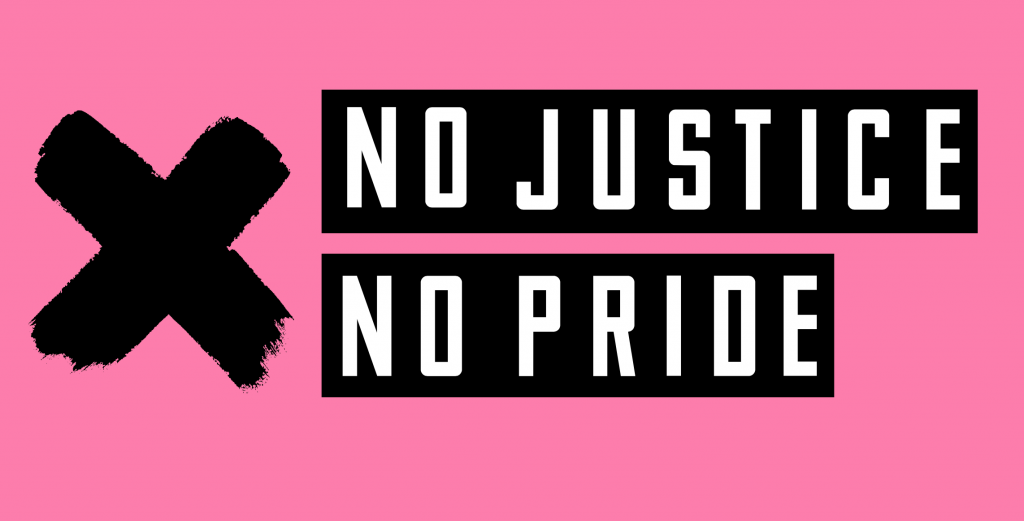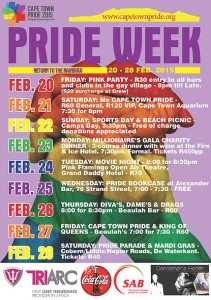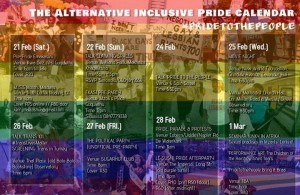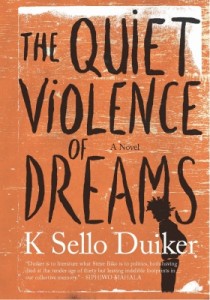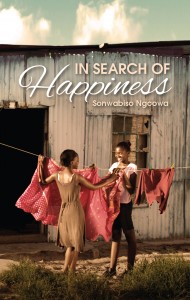“No Justice. No Pride.” describe themselves as “collective of organizers and activists” from DC, Washington comprising of “black, brown, queer, trans, gender nonconforming, bisexual, indigenous, two-spirit, formerly incarcerated, disabled, white allies and together” they “recognize that there can be no pride for some without liberation for all.”
The disruption of the Capital Pride Parade in DC, Washington has made headlines in many LGBTI corners around the world. During the disruption, activists were calling for a more political Pride parade, chanting “No Justice, No Pride” as they disrupted the Capital Pride parade. In recent years a number LGBTI Pride parades have experienced disruptions by activists calling for a different kind of politics in Pride marches. There was the disruption of Johannesburg Pride in 2012, there was the creation of Alternative Pride in Cape Town – which marched in the Cape Town Pride in protest of the non-inclusive nature of Cape Town Pride, in 2016 there was the disruption of Toronto Pride by Black Lives Matter activists, insisting that Toronto Pride was anti-black, there was the disruption of Phoenix Pride by a group of gay immigrant-rights activists in 2017, and there was also the disruption of Celebrate Israel Parade by activists from Jewish Voice for Peace in 2017.
Now, Pride disruptions are not new, they have occurred at almost every Pride cycle, the only difference now is that they are getting more publicity. It is perhaps the political climate we find ourselves in, – signified by the election of President Trump in 2016, and the continued murder of black men in the United States by white policeman with no accountability, no justice – that these disruptions are being taken seriously to the point of making the news.
Now as a South African queer person, who is involved in Pride politics in South Africa, the disruptions come as no surprise. In the past I have written about politics of Pride in Cape Town, and in a forth coming special issue of the academic journal Agenda on intersectionality, I have written about the disruption of Johannesburg Pride in 2012. I am interested in the politics of disruption because as a South African I am well versed in the politics of disruption, and my interest in the recent disruptions of Pride Parades is an interest in what disruptions are able to achieve. In light of these disruptions, it is worth thinking seriously about the politics of disruption.
In the past three years South African universities have experienced much disruption. What started with a group of black students calling for the removal of the statue of John Cecil Rhodes in the middle of campus at the University of Cape Town grew to be a national student movement comprising of student disruptions at different universities all over the country. The #RhodesMustFall movement was the catalyst for other #Fall movements, including the recent #FeesMustFall where students have been demanding free education.
What I want to highlight here is the on-going disruptions of university life. The University of Cape Town closed early in 2016 because it couldn’t function because of the #FeesMustFall disruptions. The #RhodesMustFall and then #FeesMustFall movements have spurned another movement, #DecoloniseEducation. The student movements have used the methods of disruption to be heard. The methods have been incremental in cases, where there was a march, and then the occupation of buildings, the occupation of classrooms – making it impossible to learn and teach, the closing of entry ways to university grounds, some of the tactics have lead to the destruction of university property. This has lead me, and many South Africans, to think hard about the politics of disruption. Disruption can be described as: to break apart, to cause a rupture, to throw into disorder, to prevent something – a process or a system.
What the student disruptions have done is halt the “everydayness of university life”, to say it is not business as usual. One of the biggest complaints about “change” inside South African universities is how the bureaucratic process – which often includes committee set-up upon committee set-up – is at best sluggish at addressing “change.” The disruptions at the universities have necessitated a new direction, because that’s what disruptions do; when they succeed they make you stop and think of a new way forward.
Of course disruptions are nothing “new” in the South African contexts, anti-apartheid methods involved all kinds of disruptions to fight the apartheid state. So disruptions have been part of South African politics, and with the “new” student movements the politics of disruption continues, and now also Pride parades are grappling with disruptions in 2017. I am interested in what disruptions do? How we think about them and most importantly what are the possibilities created by disruptions?
Bringing the conversation back to the Pride parade disruptions; there seems to be a similar threat running through many of the Pride Parade disruptions. Whether the disruptions took place in DC Washington, or Sea Point, Cape Town, or Toronto, Canada, or Rosebank, Johannesburg, the activists involved in the disruptions are all dissatisfied with the current politics, or lack therefore, of Pride. The activists that have spear headed disruption campaigns demand that Pride be more than just a party on floats. Now, although the demands on Pride parade organisers are slightly different in each particular case of disruption, there are many commonalities. The demands that are being made seem to be centred around:
The One In Nine Campaign activists disrupt Johannesburg Pride in 2012 in Rosebank.
- That Pride has become apolitical. That Pride is only interested in having a party, for white middle class gay and lesbian people devoid of any politics.
- That Pride has gone to the market, where pride organisers are only interested in revenue generation through sponsorship. The corporatisation of Pride has been a topic of discussion for many writers including, India Ross, who in the Financial Times dubbed Gay Pride – Gay Christmas, Danielle Kurtzleben who wrote a piece of how corporations are profiting from Pride Parades, and of course Alexander Chasin’s Selling Out: the gay and lesbian movement goes to market.
- That Pride does not engage social issues affecting other people within the LGBTI umbrella, people that are not middle-class and white and male and cis. Pride does not centre issues such as racism, gender inequality, Transgender Rights, Immigration Rights, and economic inequality. In the Cape Town context specifically, Cape Town Pride has been critiqued for being exclusive, negating black and coloured LGBTI communities that reside in the Greater Cape Town area.
- Particularly in the context of the Israeli and Palestine conflict, Pride, in the Jewish state has been criticised for being a vehicle of Pinkwashing the Human Rights violation in the West Bank. For more on this, Sarah Schulman provides some food for thought.
What is interesting to me with these Pride disruptions is the reactions to these disruptions. Now, I want to speak specifically to the South African context, because it is a context I am living in and therefore interested in, but also because it is a context I am well versed in because of my proximity. The reactions from people within the LGBTI movement to the disruption of Pride parades have been divergent. The disruptions of Johannesburg Pride and Cape Town Pride have caused what one might call Pride Wars, where essentially there are two camps, those who support ideas about a more inclusive and political Pride and those who see nothing wrong with the current structure of Pride.
In the South African context, these two groups are shaped by race, geographical location, economic status, gender, ability, gender identity, and gender performance. In Cape Town Pride, the people who want Cape Town Pride unchanged, who want to keep the organising of the Pride exclusive, they are cis-gendered white men living middle class lives and reside in suburbs of the city. Black and coloured LGBTI people, and some white, mostly female activists are demanding a new direction for Pride, one that is political, one that is inclusive of the different races, genders, and accommodates people who are the working-poor.
Recently, I had a conversation on Facebook about the politics of Pride, and why Cape Town Pride is problematic, and how there is no transparency in how the Cape Town Pride is operated. When prompted on what are the issues are, I responded:
“There is an outright refusal to engage opinions about Pride that differ to the people who are seating on the Pride Board. There is a continued neglect of different ideas of what Cape Town Pride should and/or could be. My friends and I (and other people) have attended some of those Pride meetings in past years to volunteer. The Pride meetings we attended were not about generating ideas about Pride, but how we can help the already existing structures of Pride. We don’t want to just be marshals; we want to be involved in the conceptualising of Pride, where it takes place, theme choosing, the geography of the march, etc. so that we make sure it accommodates more than just white people from Sea Point.
In 2015 a group of activists came up with “Alternative Inclusive Pride” and they asked for inclusivity and openness when it comes to Pride.
There are many unanswered questions about Pride. There is NO transparency.
• Who seats on the Board? Who CAN seat on the board?
• When does the Board vote?
• Who can vote?
• Why are Cape Town Pride meetings not publicly announced so all who are interested can attend? Not just “come and volunteer” meetings when all decisions have already been taken about Pride.
Some of the critiques against Cape Town Pride is that decisions about Pride are taken behind closed doors, and there is no accounting for the said decisions. One of the long-standing issues is the location of Pride. Must Pride always be in Sea Point/Greenpoint? The answer to this question is not so important, but the discussion that leads to that answer is what is important. It cannot be taken for granted that Pride must be in Greenpoint. As if all of Cape Town’s LGBTI people live in the immediate areas.
We can’t pretend that apartheid legacy is not with us. We can’t pretend that there are no structural issues that impede working-poor LGBTI people to attend costly Pride events. We can’t address these issues if we are not at the important meetings.”
Interestingly, my response above was in a thread on my social media account about a recent study that found that racism is endemic amongst gay men. What was interesting was the headline of the article that read, “shocking study finds racism endemic amongst gay men.” My response to the headline was ‘shocking for whom’? I doubt if the Black Lives Matter activists who disrupted Toronto pride would be shocked, I doubt if the One In Nine campaign women who orchestrated the disruption of Johannesburg Pride would be shocked, and I know for a fact that my friends and I and other LGBTI people of colour were not shocked by the results of the study because we all have experienced the racism first hand at gay establishments.
These spaces are marketed as “gay bar”, but really should be marketed as “white gay bar.” The “shocked” headline reads a bit disingenuous because LGBTI people of colour have been decrying the racism within the LGBTI spaces for a long time. There are so many blog posts and op-eds about the racism experienced by people of colour on dating websites and dating apps. Some of these written pieces can be found here, and here, and here.
The fact that this study is “shocking” points to a political problem within LGBTI spaces, a problem of not taking seriously the issues raised by non-white, non-cis, non-male LGBTI people. So the study that reveals the racism, and the subsequent “shock” the study prompts from mostly white LGBTI people, enables one to understand why there are Pride parade disruptions. The ignoring of the demands of certain demographics within the LGBTI movement has become so chronic that it necessitates the disruption of Pride to bring these issues to the fore. The question becomes, of course, how do we move forward after the disruptions.
Well, I imagine there are multiple ways of moving forward, chief amongst those is to have open discussions about the Values of Pride, and be committed to creating a Pride that represents LGBTI people and their concerns as whole as much as possible. Before all of that can take place, Pride organisers need to have a politics, a politics that understands the context in which Pride is taking place.
To be able to understand the context, that is the city – the province – the country, that Pride is taking place means genuinely involving local organisations, local activists, and local lay people in the organising of Pride. When a Pride organising committee consists of only cis-gendered white men, and one black person – for posturing – that committee is off to a really bad start. Having one person of colour in a Pride organising committee does not inclusivity make.
Part of the solution of Pride politics lies in the understanding of intersectionality, and adopting a frame of Pride organising that is not blind to intersectional politics. I have made this argument elsewhere discussing the disruption of Johannesburg Pride, and I will re-enforce the argument here. What Pride needs is an acute understanding of intersectionality. This seems self-explanatory but as we have seen with the continued disruptions of Pride and the continued hostility from Pride organisers, understanding of intersectional politics is lacking.
I use intersectionality in the same vein as Kimberle Crenshaw conceived it; in that it helps us understand that our lives are affected by our social position and our identities. The relative smoothness or the difficulty with which we move in society is because of our identities and social position. We each have multiple social identities, and these social identities intersect with each other to give us unique experiences in the world.
For example, a black gay man and a white gay man although both are men and probably can share stories about experiencing homophobia, they experience the world in different ways because of race. The difference in racial experience intersects with their maleness, and their gayness with divergent results. The racial experiences of these two men translate to having radically different ideas/experiences/feelings about their sexuality and their manhood. This is made more complex if you consider other issues like socio-economic background of the two men, their educational background, their gender performance and expression, and the list goes on. In South Africa this is complicated further by the history of apartheid where economic inequality is distributed along racial lines, and is also gendered.
Why is this important for Pride? Well, it is important for Pride because the Pride disruptions have been centred around the silences on issues affecting different demographics under the LGBTI umbrella. It is important because as Kath Weston once wrote “gender is about race is about class is about sexuality is about age is about nationality is about an entire range of social relations” and the implication is that we can’t bypass these issues in LGBTI Pride if we are serious about inclusivity which are part of the Values of Pride.
Pride organisers don’t seem to care about racism affecting LGBTI people of colour; I mean there’s even a study proving that gay men are racist. Pride organisers don’t seem to care about the working-poor LGBTI people; high non-negotiable entrance fees to Pride events that poor LGBTI people can’t afford demonstrate this. It is when pride organisers understand that South Africa is a post-colonial state with post-colonial issues that we can move forward.
It important that Pride organisers keep in mind that apartheid legacies such as apartheid geography still exist, and so when the decisions are being made about where the Pride parade should be, those decisions should take into account that other LGBTI people do not live in the city centre – and they don’t live in the city centre because of history.
Taking all of this into account, how apartheid legacy shapes South Africa, how gender injustice shapes our society, and how economic inequality is at the core of why Cape Town Pride is mostly white, we begin to see why Pride is experiencing disruptions. It is only when the importance of inclusivity within Pride, the recognition and engagement with “other” people’s struggles along with their sexual identities, will we see and experience a more united Pride.
